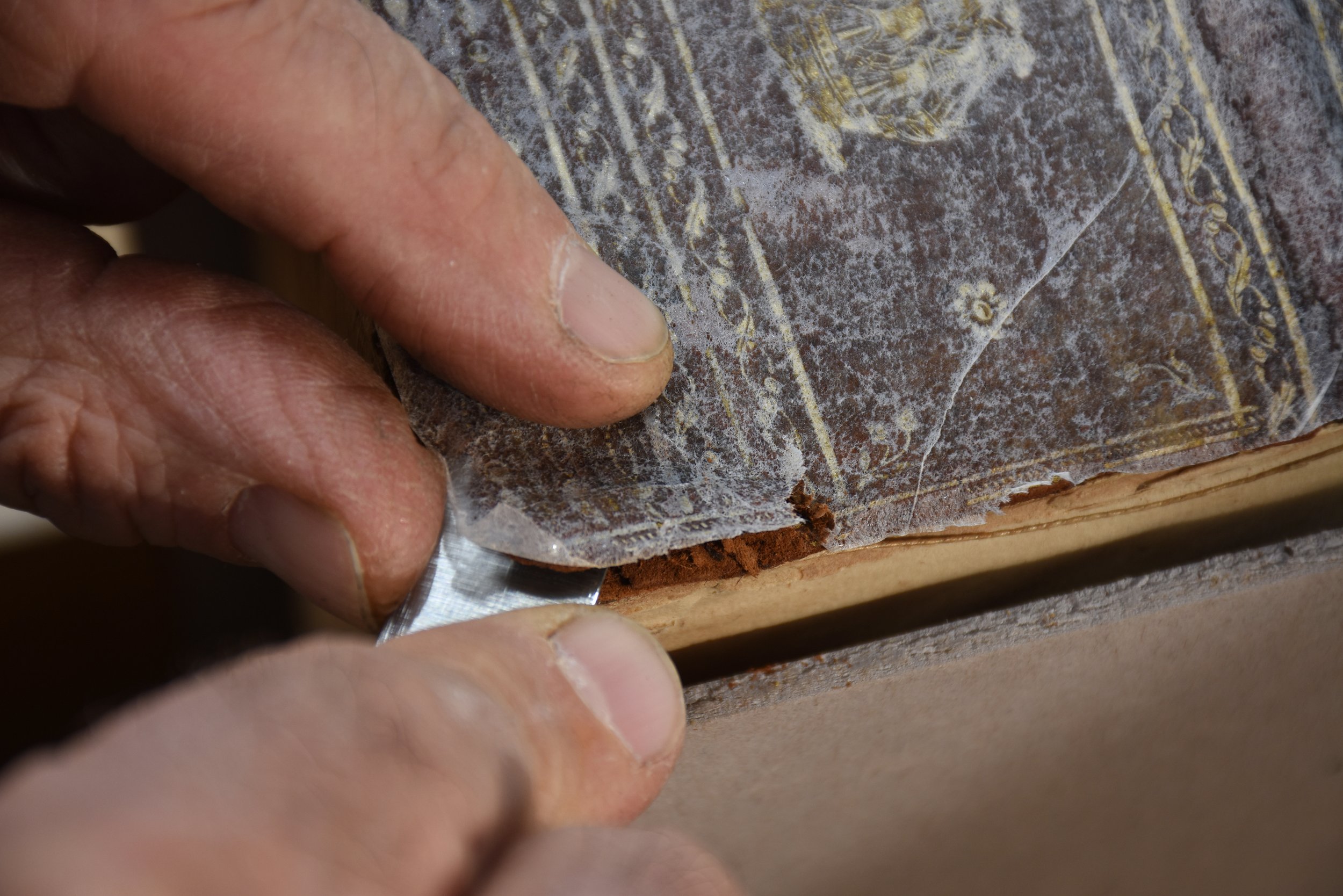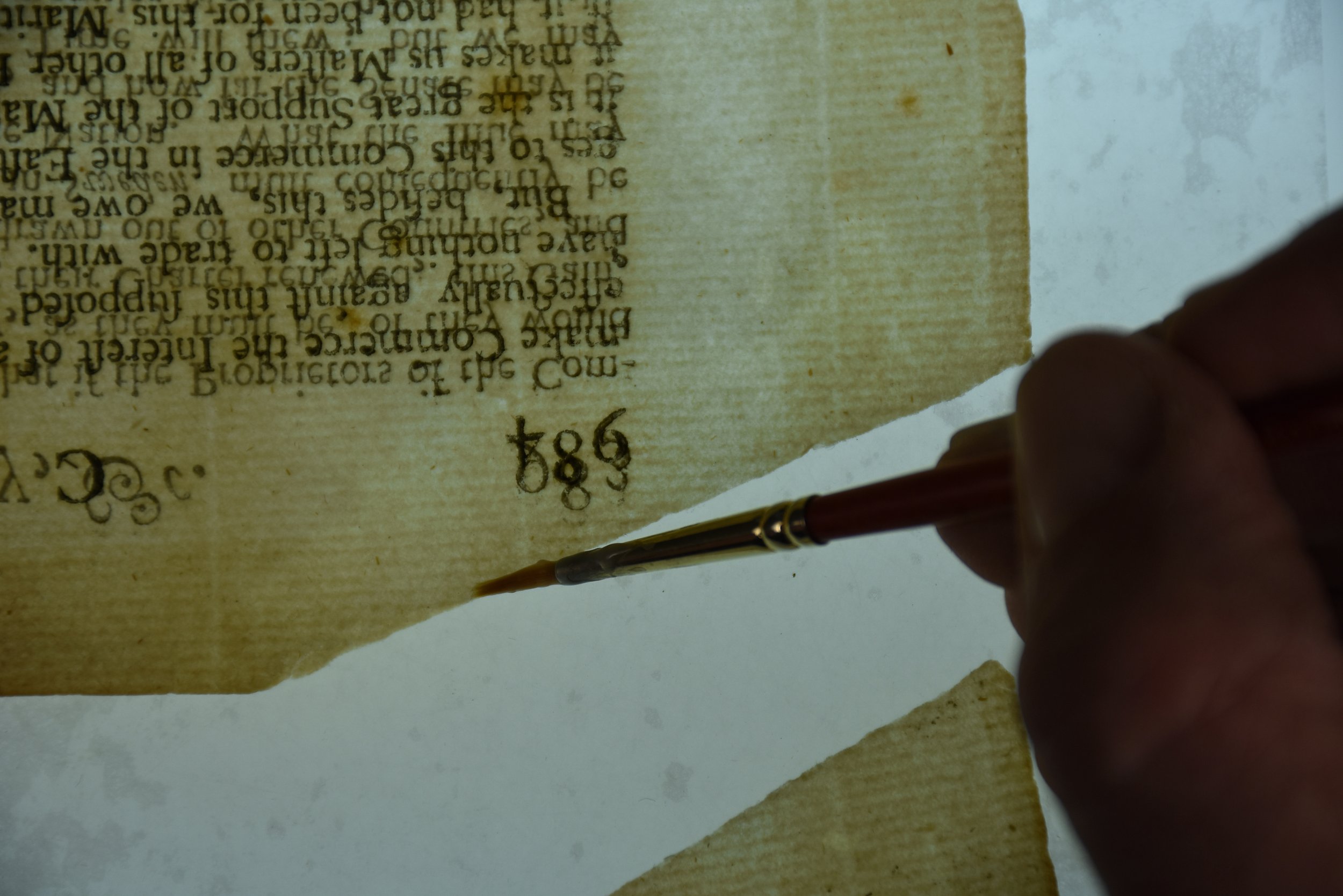At Praxis Bookbindery hands, experienced by years of training, provide the necessary care to books and documents in need of restoration or conservation. Materials received at Praxis Bindery are carefully inspected and the options for restoration or conservation are thoroughly discussed with the client. A course of treatment can then be chosen and implemented. Using high-quality, archival materials and a variety of possible treatments the item can be conserved [chemically and physically stabilized to allow safe handling], or it can be restored [stabilizing as with conservation, while paying particular attention to the importance of retaining much of the item’s original appearance].
Repairs are made in a manner sympathetic to the period and style of the original item. Keeping repairs minimal is the preferred approach, along with retaining as much of the original materials as is structurally sound. This may include repair of the textpaper as well as repair to the covers whether paper, cloth, leather or parchment. Corners and headcaps may be repaired.
When necessary extensive repairs can be made including rebuilding the pages and gatherings, resewing of the textblock, rebacking the original covers with new materials blended to visually stand back from the original materials. A last case scenario is rebinding the repaired pages into a new binding that is a pastiche of the original.
Take a short pictorial tour of repairing an eighteen century book in the photos below.
Before spine repair.
After spine repair.
Corner before repair.
Corner after repair.
Title page flattened and repairs made.
After cleaning an alcohol based size is worked into the leather.
Spine labels are lifted away.
Paper adhered to spine to facilitate lifting remainder of the panels.
Lifting the dried paper with spine panels attached.
Lifted spine panel.
All panels removed.
Spine cleaned of remaining leather, linings and adhesives.
Lifted panels adhered to toned Japanese paper.
Pages being dry-cleaned.
Starch adhesive used to reattach.
Finished attachment.
Building out missing areas of title page. Japanese paper adhered to both sides of the page.
Wet tearing away overage of repair paper.
Paring down long fibers from the repair paper.
Repair complete.
Repair of a broken dog ear.
Starch adhesive applied.
Paper reattached.
Reinforced with Japanese paper and starch.
Paring away excess paper fibers.
Original reinforced sewing common in books from the eighteenth century. Sewing is broken.
Attaching repaired title page along with new reinforcement sewing.
New reinforcement sewing.
Lining spine with Japanese paper and starch.
Sewing new endbands based upon small remnants of the original endbands.
Hollow paper tube made with handmade paper being applied. Tied up to ensure proper adhesion around cords.
Leather dyed to match original being applied.
Leather tied up as was the paper hollow.
Joint made of Japanese paper glued to be put up underneath lifted pastedown.
Joint being worked in.
Lifted panels prepared to put back in place.
Spine completed.
L'esprit des Loix - There volumes, left untreated, center rebound in a pastiche of the original and right rebacked using original covers and spine.
Before treatment - Thucydides Opera - Previously owned by Thomas Jefferson. Restored and rebound for a private client.
After treatment - Thucydides Opera - Previously owned by Thomas Jefferson. Restored and rebound for a private client.










































